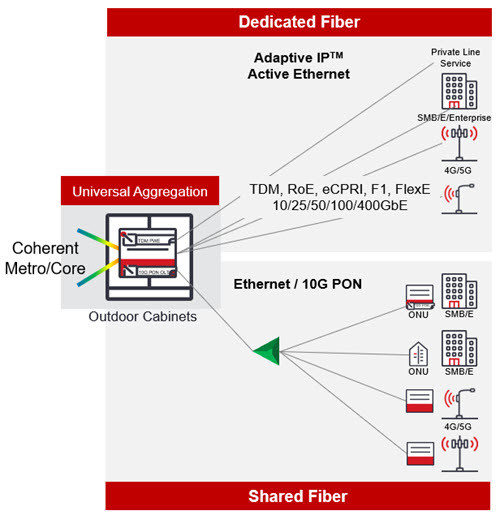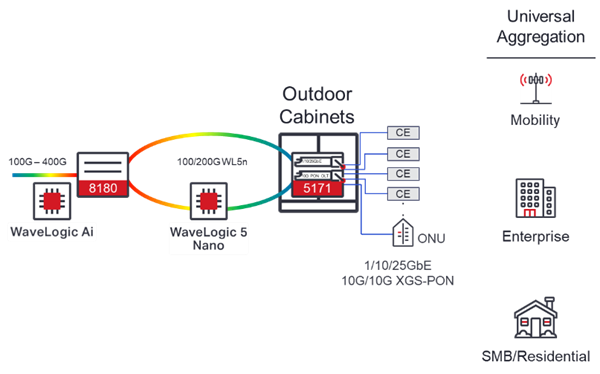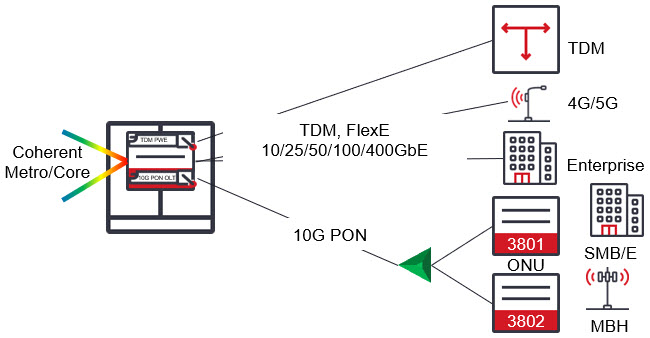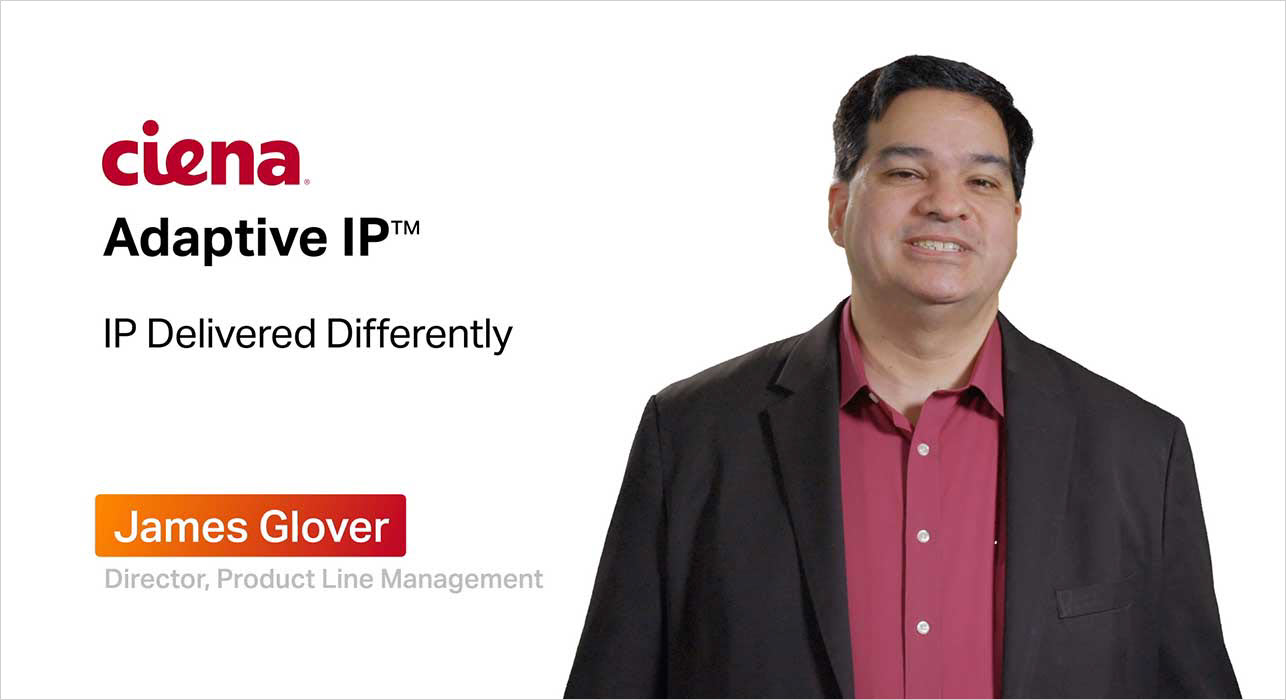Universal aggregation for service providers
In the Service Provider network world, human-to-human, human-to-machine, and machine-to-machine end-user (customer) use-cases drive network requirements that generate service revenues. Revenues from higher capacities, lower latency, and a massive number of end-point connections. Operators need to deliver an increasingly better user experience while keeping costs controlled to remain competitive. Most recently, new network pressures have been three-pronged:
- Higher capacity needed for services like Virtual Reality (VR), Augmented Reality (AR), work from home (WFH), Ultra High Definition (UHD) videoconferencing, video monitoring, and cloud computing at the edge.
- Lower latency demands for services like gaming, autonomous vehicles, AR/VR, industrial automation, and tactile Internet.
- A Massive and Growing Number of end-point connections for smart homes, smart cities, transportation, and wearables.
With a massive amount of over-the-top (OTT) demand, IoT, Machine-to-Machine (M2M), mobile and many more new services, it’s no surprise Service Providers have invested heavily in deploying fiber deeper into their networks. Their goal is to increase service speeds by investing heavily in their access networks to accommodate future service growth while ensuring advertised speeds and services surpass the competition. To do so they’ll need an architecture that leverages Universal Aggregation (UA).
What is Universal Aggregation?
UA provides increased choice and control of tangible business value assets like pluggable coherent optics, dedicated and shared fiber, and Ciena’s automated, open, and lean Adaptive IPTM. By supporting all services, including mobility, UA expands the Service Provider’s application space and competitiveness. A smaller footprint, increased capacity, and larger interconnect scale in platforms that automate and simplify deployments facilitates increased choice to Service Providers.

Universal aggregation solution
Increasingly, Service Providers are looking to UA solutions to solve several business challenges because it provides the right speeds, feeds, and routing capabilities to support traffic from multiple different service types, including private line business services, mobile, shared fiber, and Passive Optical Network (PON). Unifying packet and optical transport infrastructure enables a simple, compact, scalable, and efficient programmable infrastructure supporting coherent optic transport, switching, and routing capabilities for Service Provider services now, and well into the future.
The challenges of multi-vendor, multi-layer network infrastructure

Potential multi-vendor, multi-Layer risks
Most Service Provider environments are quite challenging with multiple vendors technology deployed for TDM, Ethernet, IP, and PON. In most cases, the majority of the distance a service travels is over optical fiber, which connects multiple types of equipment, including digital fiber nodes, Ethernet, IP, private line, and PON. In the previous blog, I pointed out a number of potential risks related to infrastructure sprawl, scale, and complexity.
Maintaining multiple optical transport, switching, and routing networks to deliver service overlays is getting increasingly difficult and complex to manage and support. This also makes the network more troublesome to address issues quickly enough to ensure an expected customer quality of experience.
Service Providers need more efficient network scaling, or a simplified IP architecture like Ciena’s Adaptive IP, to monetize differentiated and wholesale service offerings. With advanced multi-layer protocol support, Segment Routing and/or FlexEthernet can be used to provide single or multi-tenant service offerings from 1GbE to 400GbE and shared fiber 10G PON technology with Ciena’s UA solution.
To ensure services remain profitable, Service Providers need a new approach to infrastructure design and deployment. Instead of building out new optical and Layer 2/3 infrastructure to add new capacity and support new services, Service Providers should consider redesigning their network architecture based on UA.
WaveLogicTM Coherent Optical Networking

WaveLogic Coherent Optical Networking
As the network edge emerges as a critical location for connect, compute, and store, Service Providers are evolving from building separate, siloed networks. Coherent packet-optical technology plays an increasingly critical role in solving networking challenges related to improvements in capacity, costs, and competitiveness. Increasingly, Service Providers look to coherent packet-optical technology to solve the scalability and cost per bit challenges in their network, and rightfully so.
The use of modern, coherent packet-optical technologies, and advanced packet networking technology in the same platform, is a key benefit in eliminating cost and complexity associated with deploying separate packet and optical devices.
By harnessing strong performance and programmability offered by Ciena’s WaveLogic family of coherent optics, Service Providers can maximize performance capacity at any distance. While pluggable coherent optics can address the needs of next-generation access, including extended temperature support for street-level cabinet deployment of outdoor aggregation as shown above, with the possibility of future pole-mounted devices.
Service Provider benefits of UA
The value of UA is simple – choice! The choice of not having to building different access networks for different Service Provider services. Choice of using different fiber for different services with unified fiber for different mobile services. Choice of aggregation for different services to aggregation for all services. Choice of moving from closed Network Management Software (NMS) to open source streaming telemetry. Choice from having network revolutions to an evolution for all of your services.

Universal Aggregation services
An evolution of network service interfaces including FlexEthernet, which allows Service Providers with a very simple and reliable means of adjusting and matching the service rate to any flexible line rate – with no site visits required – resulting in a more efficient and simpler-to-manage network.

FlexE services
Need low latency communications? Ciena’s UA solution has that too. As a Layer 1 technology, FlexEthernet provides low latency while supporting service isolation for 5G New Radios (NRs), and other low latency services via channelization.
A new simplicity for the Service Provider
Ciena’s Universal Aggregation solution allows flexible, open deployments supported by our feature-rich extensive Packet Networking portfolio. Instead of building siloed, standalone architectures to support different types of services, Service Providers can now bring more value to their networks by supporting concurrent PON, IP, and Ethernet services on the same Ciena aggregation platform. This improves customer satisfaction, choice, and business value control.
Universal Aggregation is where the market is headed, to find out how to remove the constraints and bring more value to your network edge today, ask us how Ciena helps Evolutionize Your Packet Network.
What’s in your aggregation network?





